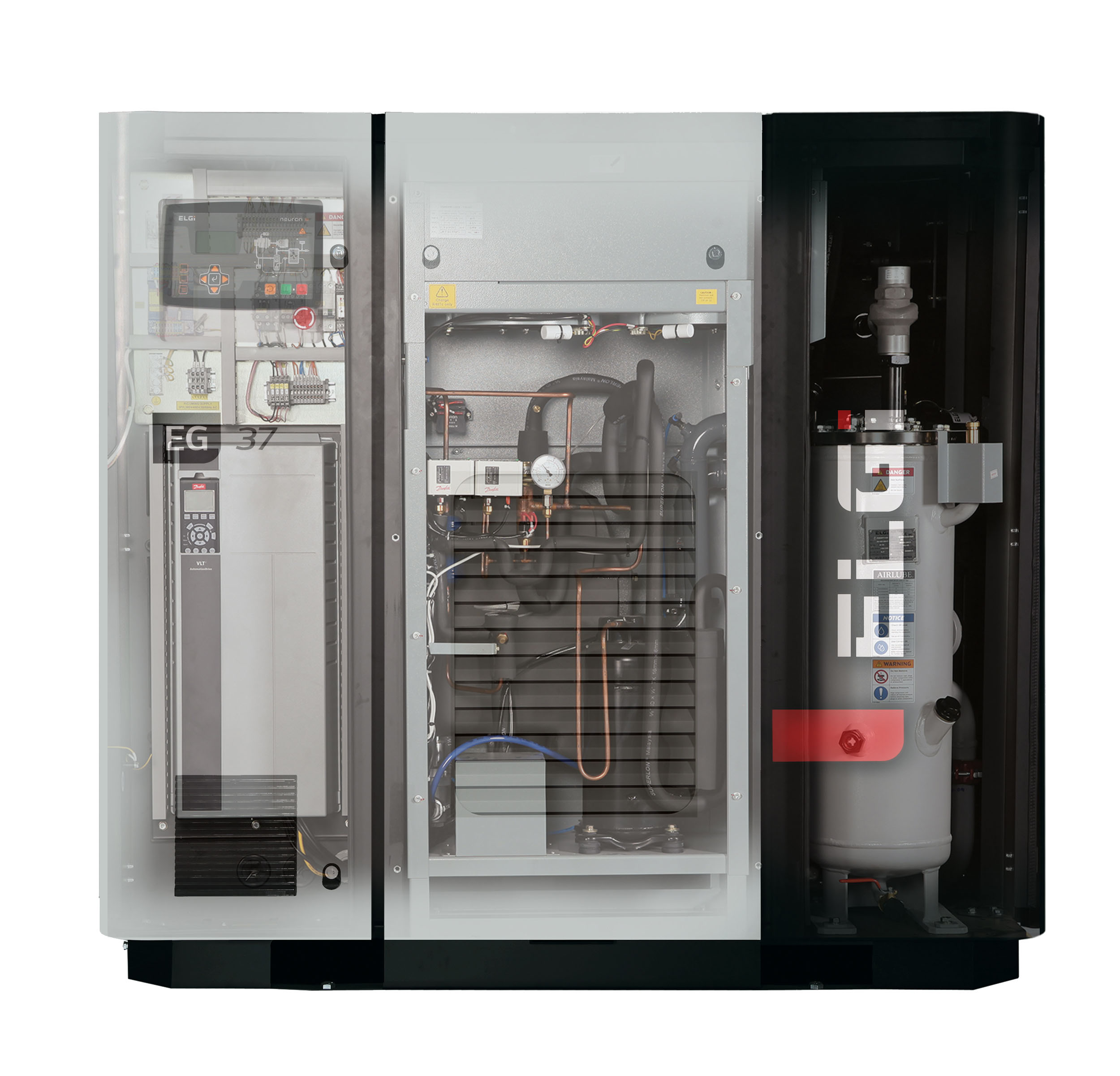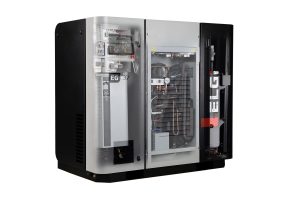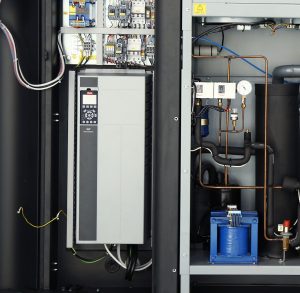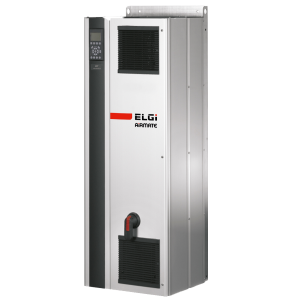VFD installed compressors help cut down energy consumption

In today’s business environment where uncertainty rules and competition is on the rise, companies need to keep operational costs low to stay profitable. On the production floor, a major component of the running cost is the monthly power bill, which can be high due to power guzzling heavy equipment, wasteful uses and leaks. Production managers are now looking for new advanced technologies that not just offer high performance and reliability but also power efficiency and lower operational costs.
One such opportunity lies in installing an air compressor with a variable frequency drive (VFD). The VFD is an electronic module, which is used to change the speed of the motor by varying the frequency applied to the motor. The motor speed is directly proportional to the frequency, and thus changes in frequency impact the motor speed and the amount of power consumed. The VFD can transform air compressors that have traditionally been known as power guzzlers into energy-efficient equipment.
As much as 85 percent of the total lifecycle cost of an air compressor comes from its energy consumption. Once it is fitted with a VFD, the energy cost of an average compressor comes down by 18 percent. This calculation is based on the assumption that it is a compressor with a running life of 15 years, runs 24 hours a day and has a load-unload cycle of 70:30. Several customers of Elgi Equipments, a leading global manufacturer of air compressors, have experienced much higher savings.

How does the VFD work?
The volume of compressed air required for an application changes according to the different stages of production and the associated demand from other equipment connected to the compressor. In compressor terms, there is a base load, which is the minimum demand over a period of time, and trim load, which are spikes in demand during a cycle. For example, a foundry client reported a base load of approx. 550 CFM and a trim load of 550-900 cfm. A VFD is useful to manage power consumption during trim load.
In case of a fixed speed compressor, the air delivered (also known as free air delivery or FAD), is 100 percent during loading of the machine. If the demand is less than what is being delivered, the pressure increases up to the unload set point and the compressor unloads. During unloading, the compressor does not deliver air but still consumes approx. 25-30 percent of power.

Even when there is no air delivery from the compressor, the application still consumes air and the pressure in the system drops to the load set point. At this load set point, the compressor starts loading again and produces 100 percent air. This load-unload cycle will be repeated based on the application’s air demand.
In the case of a VFD-powered machine, the FAD is directly proportional to the motor speed. The VFD alters the compressor’s motor speed and thereby controls the FAD delivered. During trim load, the VFD delivers the required variable air demand for the exact length of time, without altering the pressure, which results in lower power consumption.
For example, at 100 percent speed, the compressor delivers 100 percent FAD and consumes 103 percent power (3% loss). Or at 30 percent speed, it delivers 25-27 percent FAD (3-5% loss) and consumes 33 percent power. At lower speeds, the FAD is lower due to losses; approximately 30 percent is the speed limit for a compressor.
Energy savings – three different opportunities
1. 25 percent energy saving due to the elimination of the unload cycle: In general, compressors work in the load-unload mode. When there is demand, compressor loads and allows the pressure to rise, and unloads once it reaches the unload pressure set point. The compressor cannot be turned off since the motors are not designed to frequent switching on and off. During the unload cycle, the intake valve closes and there is no air flow, but the motor continues to run at the rated speed. The compressor consumes 25-30 percent of power. With VFD, there is no unload cycle, and air continues to be produced at the required pressure.
2. 5 percent energy saving due to reduction in operating pressure: If an application requires an operating pressure of 100 psi, the fixed speed machine operates on load-unload set points which are 100 and 125 psi, respectively. To compress an extra 10 psi, approximately 5 percent of additional energy is spent, which is a waste. In a VFD-powered compressor, the pressure is maintained constantly throughout and this loss is eliminated.
3. 3 percent energy saving due to leakage and pressure drop reduction: Air leakages and pressure drops are inevitable in any compressed air system. For every 10 psi increase in compressed air pressure, there is a corresponding 3 percent higher rate of leakage and pressure drop in the compressed air circuit, which demands extra power. Since a fixed speed machine requires 10 psi extra over the desired pressure, it is bound to lose energy on this account. In VFD-powered compressors, the pressure is maintained constant throughout the cycle and leakage losses due to increase in pressure are eliminated.
VFD compressors are highly effective ways to save energy during a compressor application. If the requirement is 900 cfm, the base load will be shared by load-unload compressor of 400 cfm and the trim load will be shared by the 500 cfm VFD compressor. With such compelling results, the demand for VFD retrofitting is steadily going up.

FAQs
How do I know if my air compressor has energy saving potential through a VFD?
In every compressor there is an hour meter, which shows the run hour, load and unload hours. If the unload hours are 15-20 percent of total run hours, there is a potential to save energy through a VFD.
How does one confirm the base load and trim load requirements?
The best method to ascertain the base load and trim load requirements is to conduct an energy audit that will accurately measure the base and trim load demand.
What will happen if we install a VFD for base load requirements?
If you want to install a VFD for the base load alone, there will not be any energy saving since the base load does not go to an unload cycle. A VFD-powered machine will consume 103 percent power at full load (3% VFD losses). Hence there will not be any savings.

